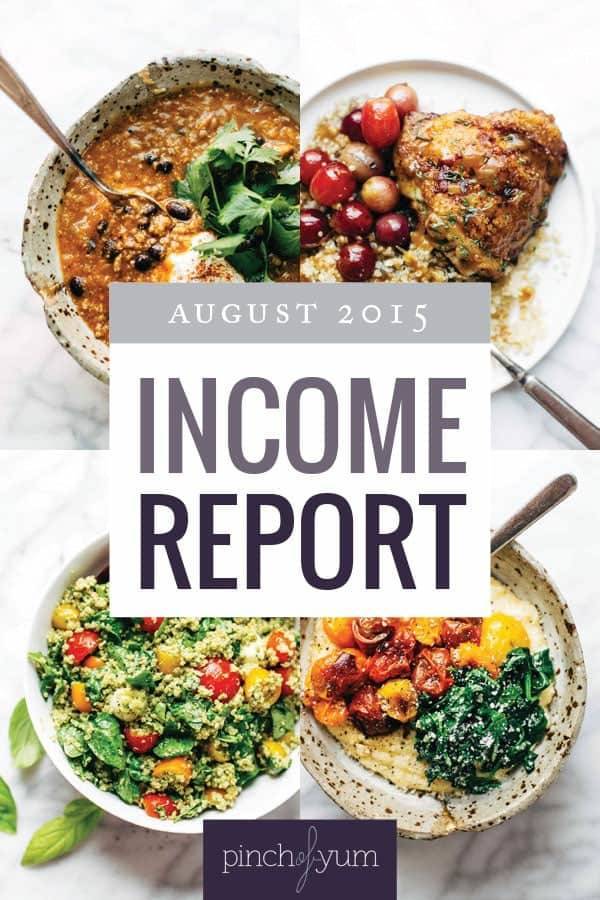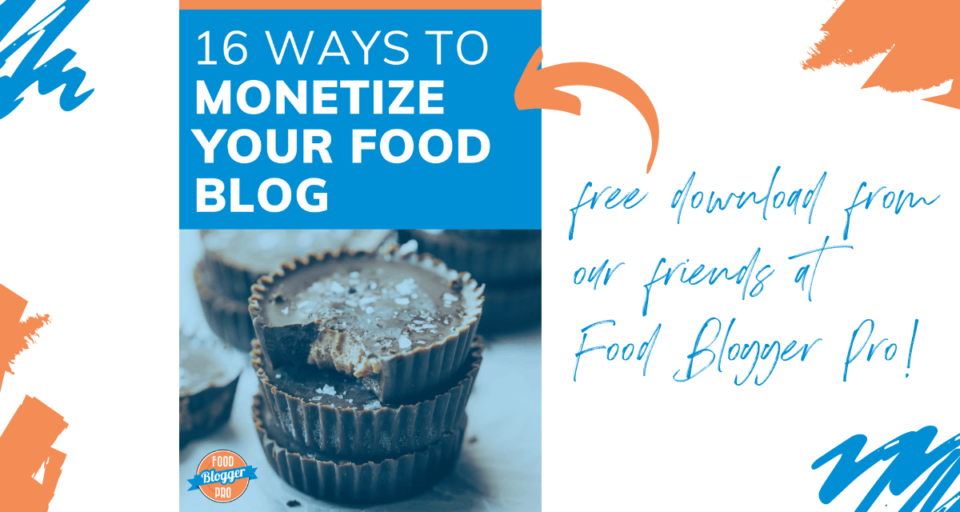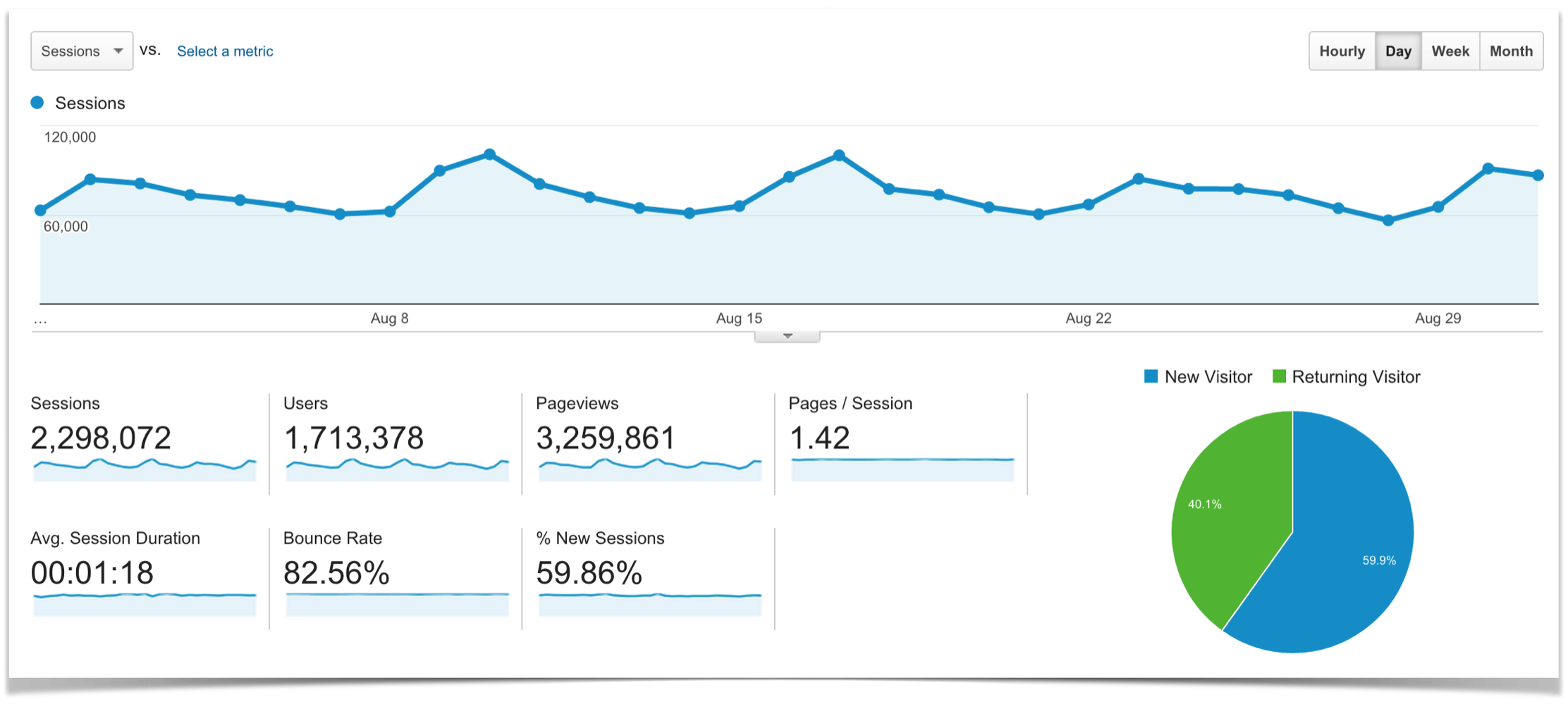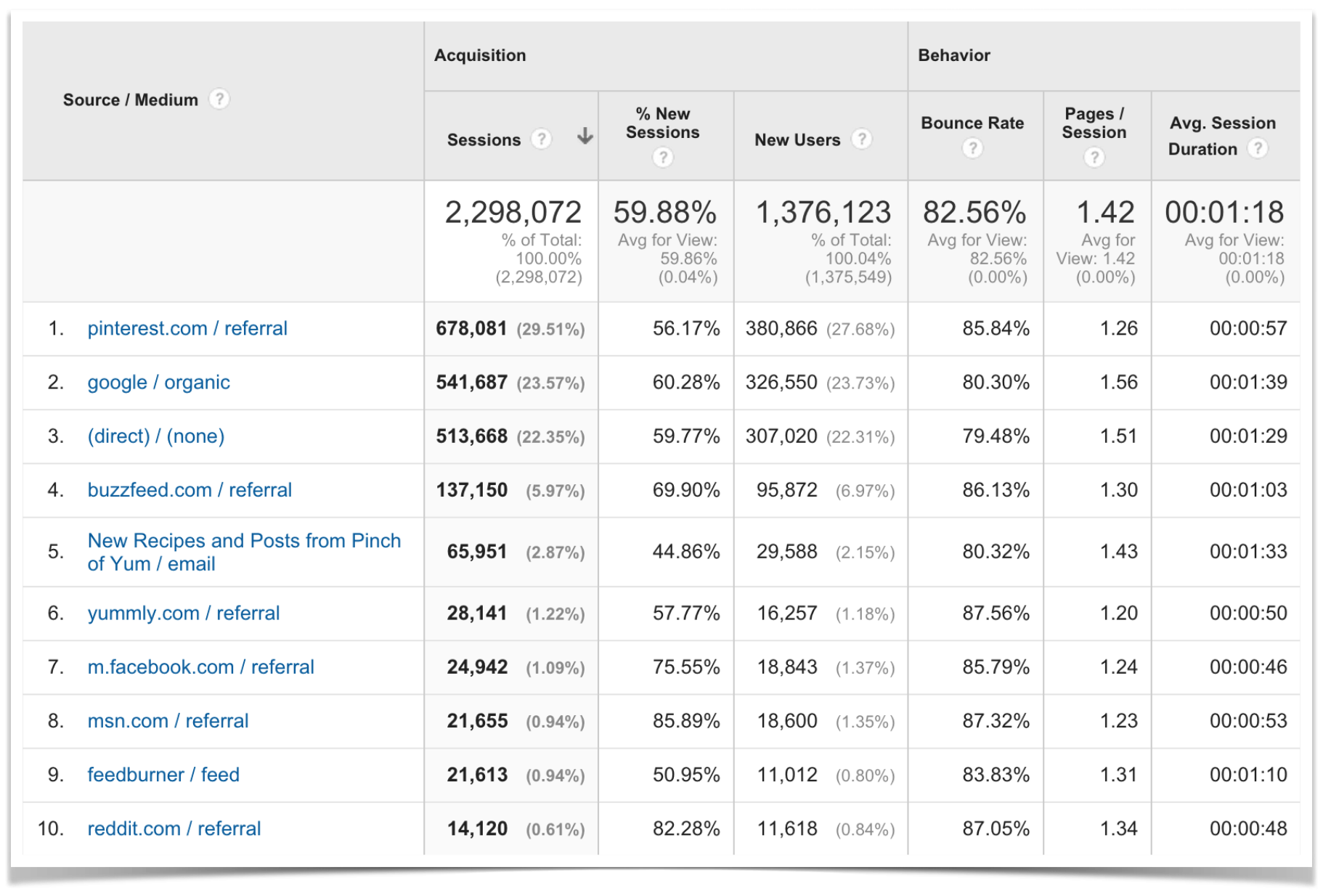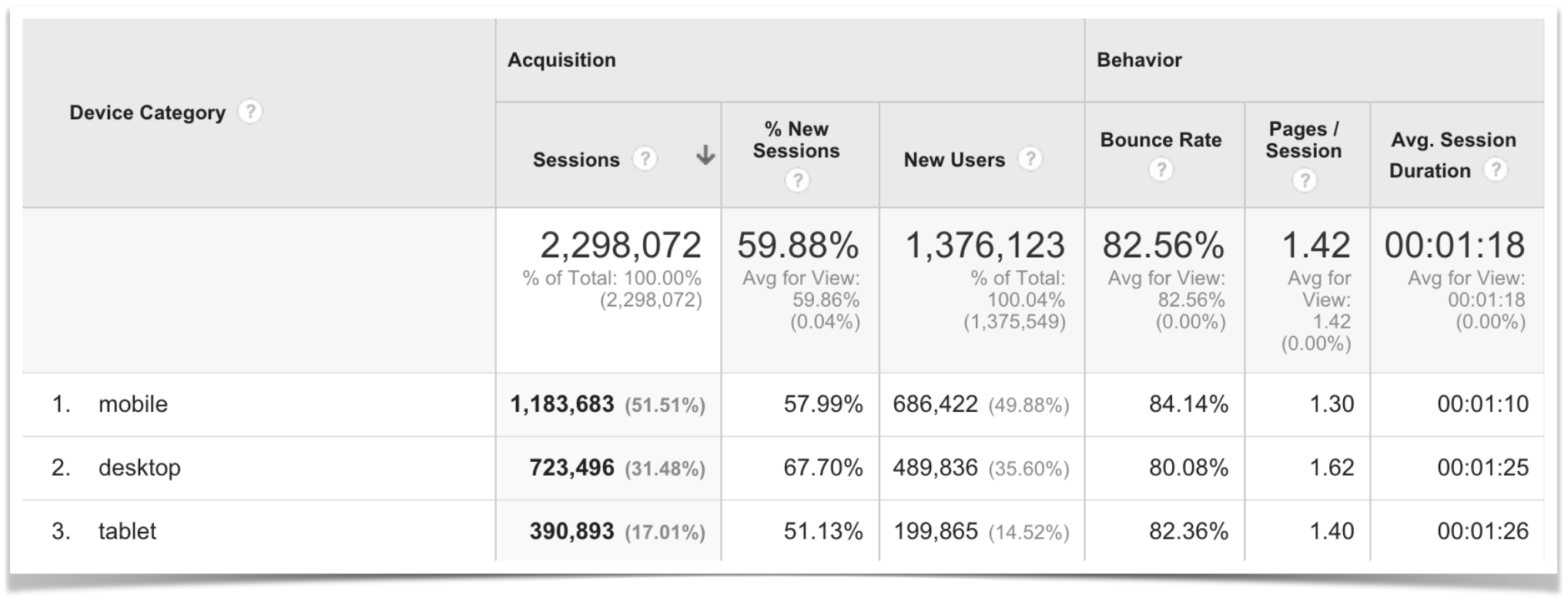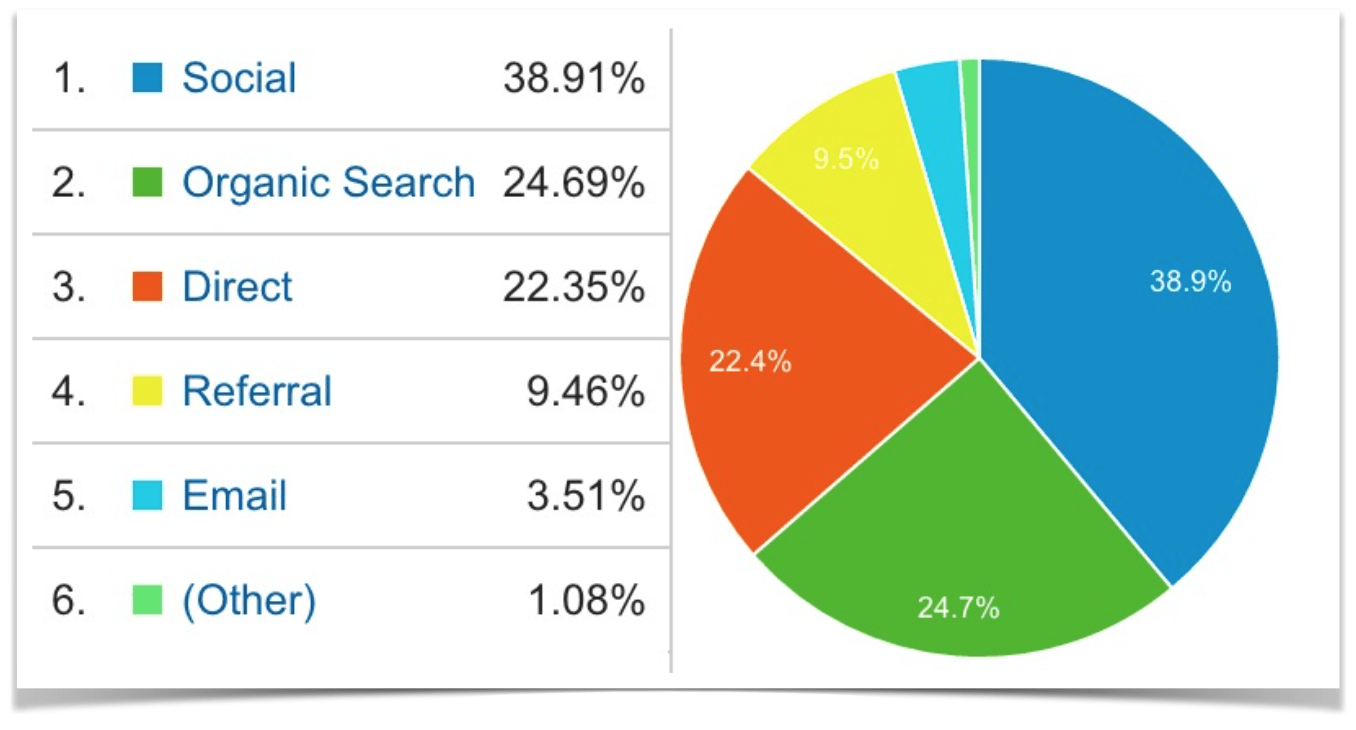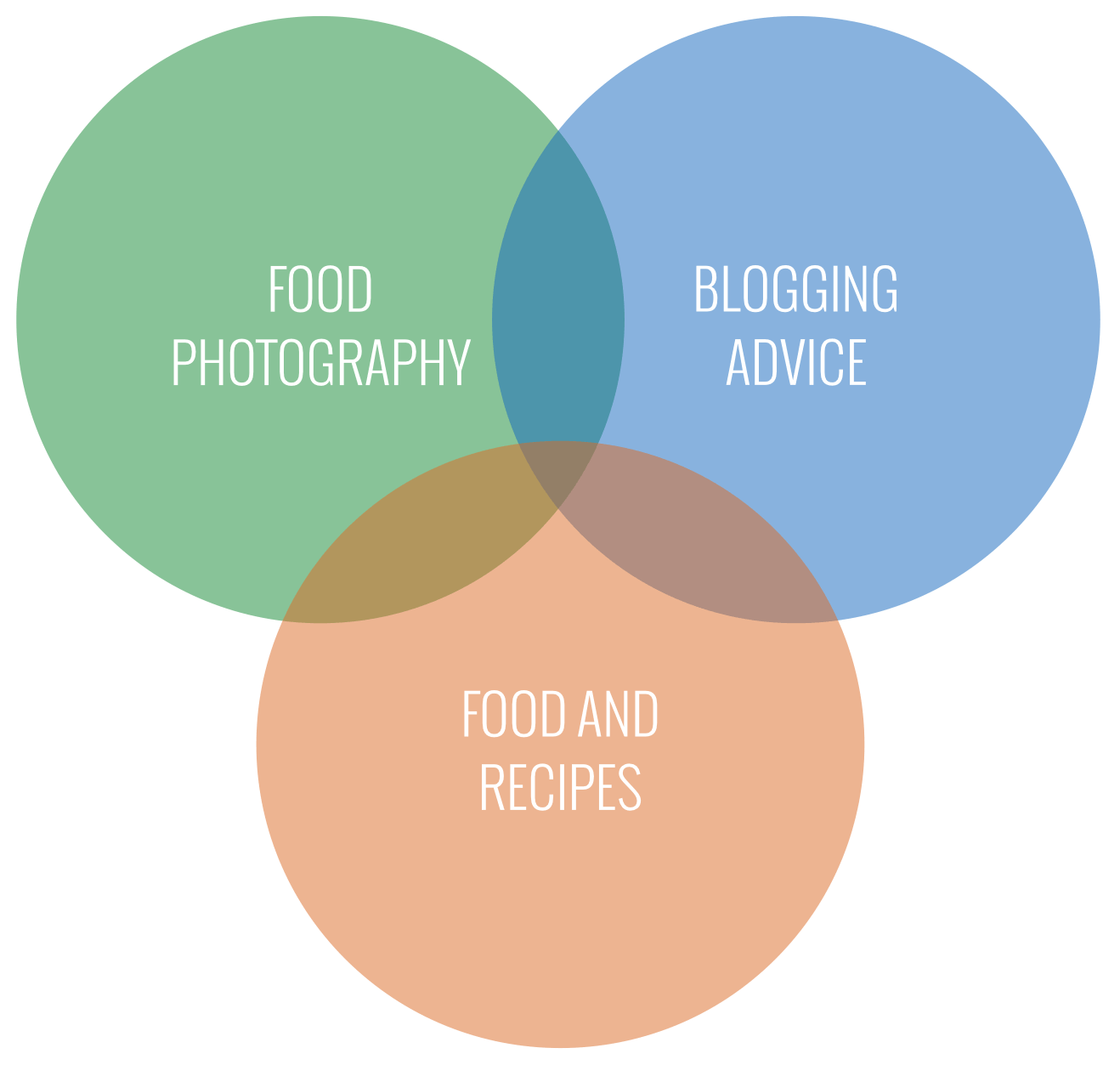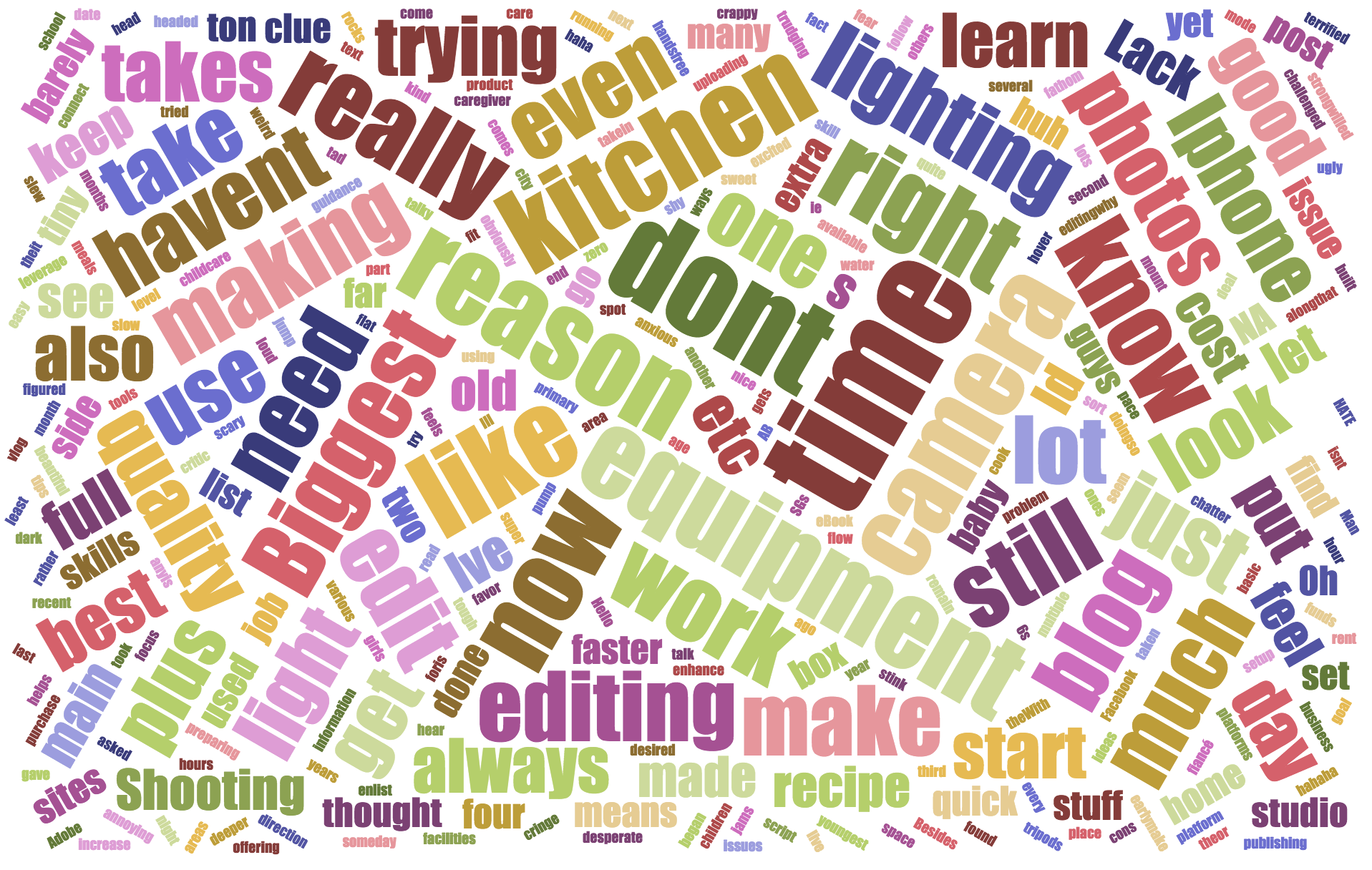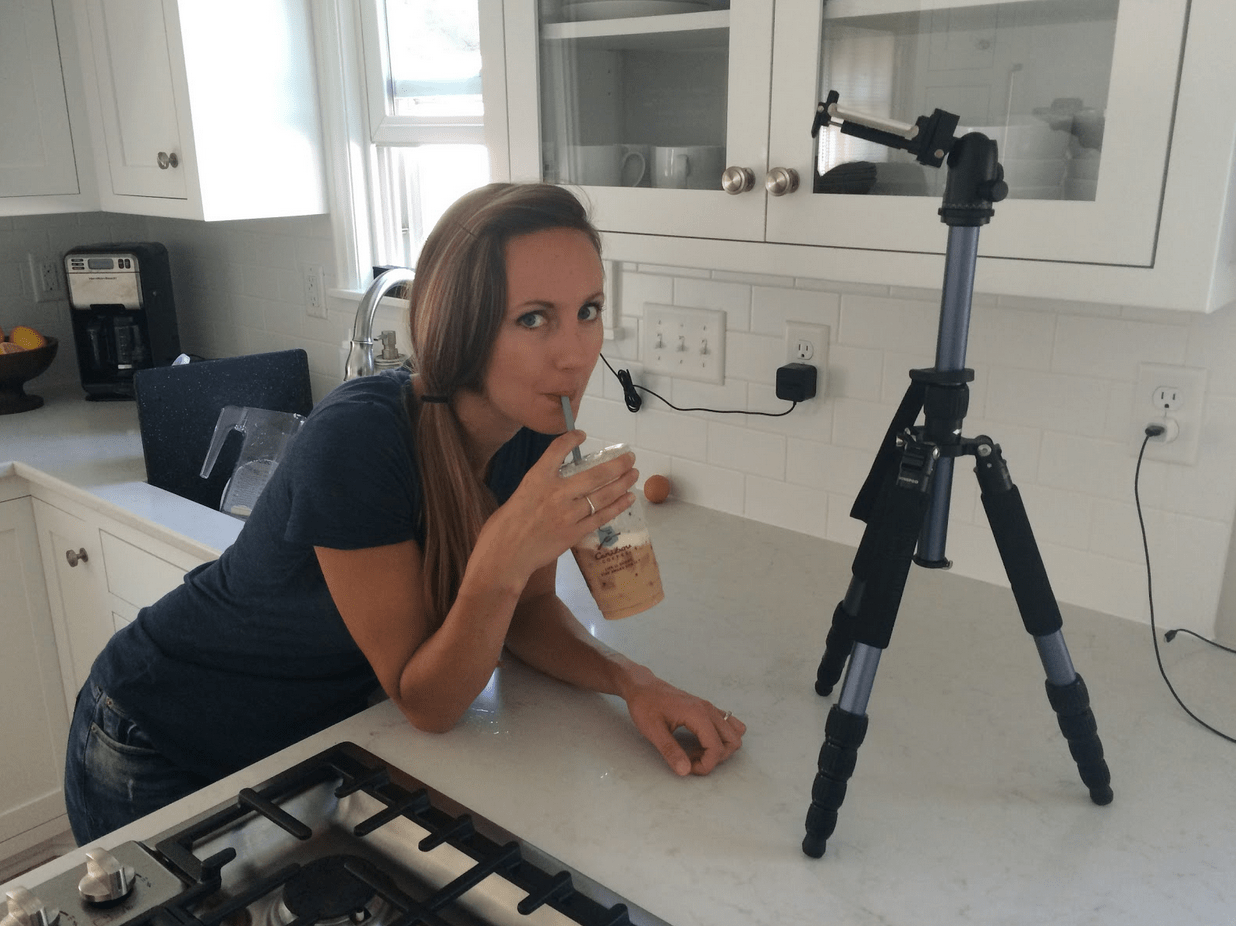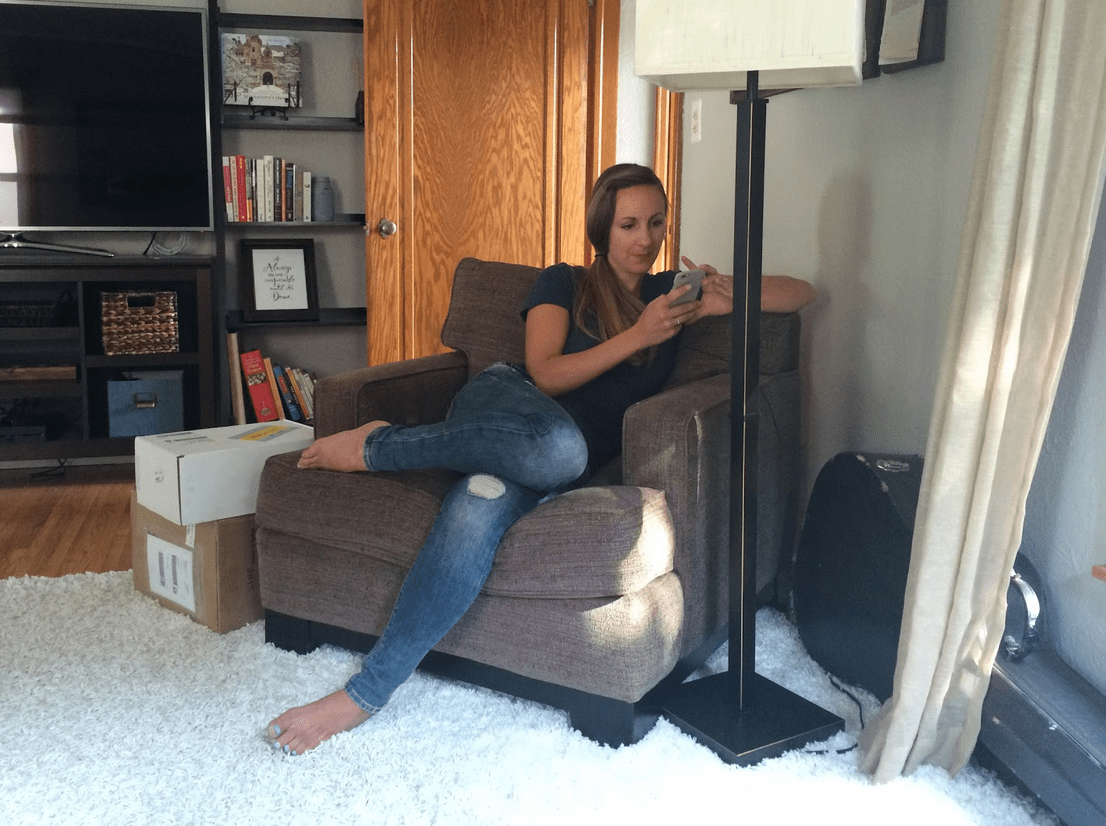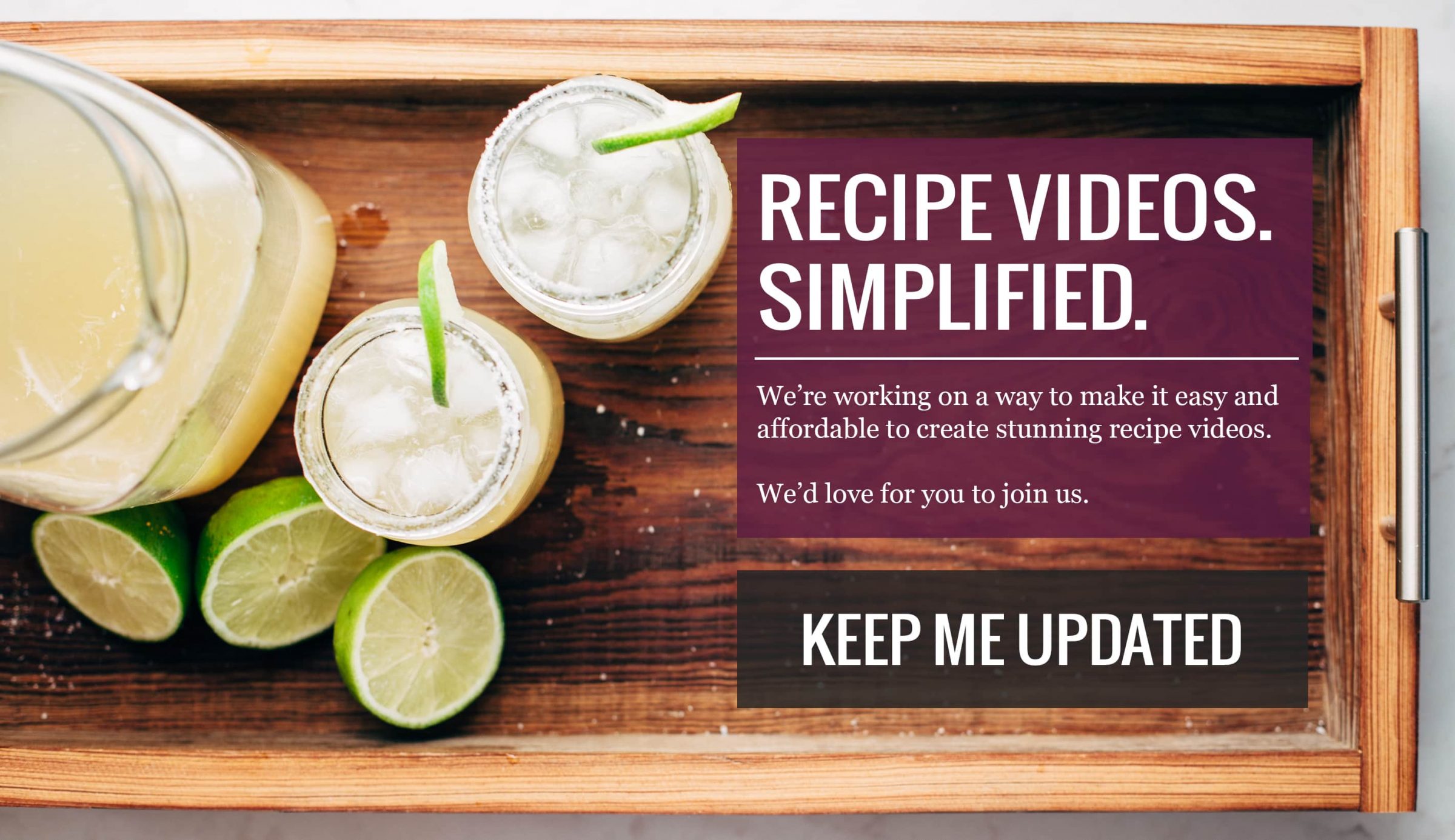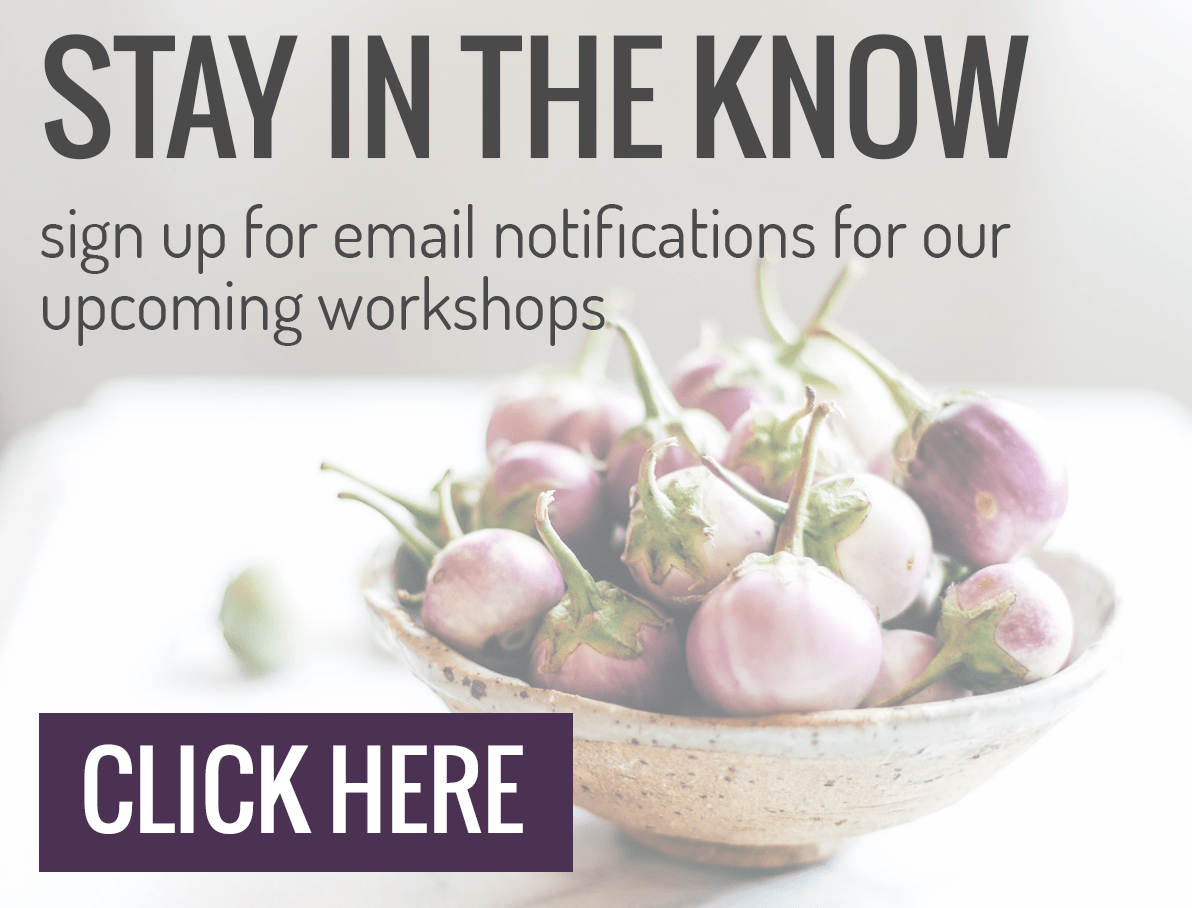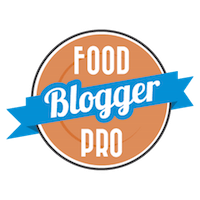I hop on to Pinch of Yum once every month to write a post that we call an income and traffic report. What is an income and traffic report? Well, believe it or not, it’s a report on income and traffic, specifically the income and traffic as it pertains to this blog – Pinch of Yum. It’s a bit strange to openly publish things that are usually so private, but we’ve found it to be valuable, both for us and (we hope) for others as well. These reports are valuable for us because it keeps us accountable to continually improving. They also provide a real-life example of the things that we teach and talk about in Food Blogger Pro. We’ve also found that the people that read these reports (that’s you!) have been extremely helpful in offering insights, advice, and guidance as we try new things and attempt to solve difficult problems. We as a group are a lot smarter than just Lindsay and I. We appreciate when we hear ideas and suggestions from you! We’re not the only blog or company that does reports like this. Pat Flynn at Smart Passive Income has been doing similar reports for a really long time, and companies like Buffer, Moz, and Baremetrics have embraced transparency as well. This post from Josh Pigford, founder of Baremetrics, is a great overview of the positives and negatives of The Transparency Movement. We’ve definitely noticed some of the benefits he outlines, like press attention and community involvement. But we’ve also noticed some of the risks he talks about, like the potential for an increase in competition and extra scrutiny. We hope that others find value in these reports by using them as a real-time case study of what’s working and what’s not working. The goal isn’t for you as the reader to feel like you need to make a carbon copy of the things that have been effective for us – although there’s nothing stopping you from doing that, but rather to put the pieces together so you can really understand what’s working and, most importantly, why it’s working, and then make it your own. In short – our hope is that reading these reports sparks a new idea for you. Or, more accurately, pours fuel on the spark that you already have. Let’s take a look at the numbers for August. A quick note: Some of the links below are affiliate links. All of the products listed below are products and services we’ve used before. If you have any questions about any of the income or expenses you can leave a comment and I’ll do my best to reply.
Income
*Federated Media is super delayed with releasing earnings reports, which means we don’t have hard numbers when we publish these reports. We estimate earnings by using CPM earnings from last month and multiplying that by the traffic we experienced this month.
Expenses
If you’re interested in learning more about some of the ways that you can monetize a food blog, we encourage you to download this free ebook, “16 Ways to Monetize Your Food Blog,” from our sister site, Food Blogger Pro!
Traffic Totals
Below are some screenshots from Google Analytics. You can click on these images to view a larger size.
Traffic Overview
Top Ten Traffic Sources
Mobile Vs. Desktop Vs. Tablet
Top Traffic Channels
MailChimp To ActiveCampaign
We’ve started the process of switching our email lists (both Pinch of Yum and Food Blogger Pro) over to ActiveCampaign. ActiveCampaign does a lot of awesome stuff, but the primary benefit is that we’ll be able to understand and segment the people that have signed up for the different email lists we have. For instance, some of you are interested in blogging but not interested in recipes. Some of you are interested in recipes but not blogging. Some of you are crazy about Sage (like we are) while others couldn’t care less about dogs (who are you?!?). Some of you are trying to eat healthier while others are looking for the best dessert recipes that Pinch of Yum has to offer. You get the point… The needs and wants of people vary drastically, and up until now we didn’t have any way to speak to people based on their various needs and wants. A service like ActiveCampaign allows us to understand the needs, wants, and behaviors of the people on our email list. For instance, here’s a screenshot of the first draft of our “tags” setup: Let’s take the TOP: Food Photography tag as an example. What we’re saying with this tag is that anyone that subscribers to a POY or FBP list that visits one of the Pinch of Yum food photography posts will be assigned the TOP: Food Photography tag. As you can see a tag is a way that you identify what someone is interested in or an action that they’ve taken. Tags can be created when someone clicks on a link in an email, visits a certain URL, downloads a certain product, signs up for a list, or blah, blah, blah…you get the idea. The goal with all of this is to understand the things that people are interested in and, perhaps more importantly, the things that people aren’t interested in. This is important because we don’t want to send an email about food photography to people that have signed up to get Pinch of Yum blog posts sent via to them. It’s not something that most people on that list would be interested in. This resulted in us (almost) never sending emails to the general Pinch of Yum email list because we didn’t want to send a niche email to the entire list when in actuality it only applied to 5–10% of the list. Ideally, we’d be able to see the interest of subscribers clearly like this: But without segment (where we are right now) it looks like this: The question I’m guessing most people are thinking right now: Should I be doing this? Yes. And no. If you’re in the beginning stages of building your blog you probably don’t need a tool like this (see Intentional Ignorance section below, specifically the last half of that section). Focus on getting stuff up and running with your blog, creating great content, and encouraging people to sign up for a basic email list that you can offer through a service like MailChimp. The exception would be people that have (1) the money to invest in a tool like this or (2) the time to learn it or (3) a site that you’re growing as a product first business (eCommerce for instance) vs. a content-first site (like a food blog with free recipes). Speaking of #2 in that list (time to learn) that brings me to my next takeaway from this month…
Intentional Ignorance
Intentional ignorance <—- I’ve been thinking about this concept a lot lately. The phrase came to me after hearing (and pondering) a story about Henry Ford. In 1919 Henry Ford sued The Chicago Tribune after they published an article that accused Ford of being an ignorant idealist and an anarchist. (Interesting side note – the issue had to do with the U.S. and Mexican border….some things never change). Part of the trial involved an attempt by The Chicago Tribune to prove Ford was an “ignorant idealist.” Emphasis on ignorant, as you’ll see below. A quote from The Henry Ford Museum website: As Napoleon Hill tells it, Ford eventually became frustrated with the questions and responded with this: We all know that Henry Ford was smart. But he wasn’t the most knowledgeable. I’m learning the same needs to be true for us as we continue to find ways to build and grow our blog. We can’t be experts on email, ad networks, design, development, marketing, video, photography, accounting, and all the other things that come along with building a website. But we do have to be excellent at email, ad networks, design, development, marketing, video, photography, accounting, and all the other things that come along with building a website. It’s hard to be excellent at something if you’re not an expert, so if we’re making the decision to not be an expert, that means we need to find people who are experts and (this is hard part for me) release the need to individually be the person who fully understands all processes, tools, or skills. It’s the difference between being the team and building the team. But what if you’re just getting started or you don’t have a budget to hire experts to help out? My encouragement to you would be to allow yourself to be intentionally ignorant about certain things, even if people are telling you that it’s important to be an expert. Pinterest is important. Instagram is important. Email is important. Photography is important. Networking is important. Reading these income reports is important. But you can’t do it all, and if you do, you’ll be overwhelmed. Declaring intentional ignorance on many of the so-called “important things” allows yourself to focus on the things that (1) you enjoy the most and (2) you’re best at. Sure, there are some things you can’t ignore. Like accounting, for example. You need to pay taxes and follow the rules laid out by your government. But you don’t need to be an expert at the majority of things. For example, when Lindsay started Pinch of Yum, she had no idea how to use Pinterest (and didn’t have much interest in it, either). Even though lots of other bloggers were getting on board with Pinterest in the beginning, she declared intentional ignorance on that in order to focus on creating more content for Pinch of Yum until she came to a point when Pinterest had really proven its worth as a tool for building traffic. One thing at a time. Burnout and overwhelm are very real. It’ll be much easier to build consistent momentum if you’re intentional about being ignorant about certain things while at the same time focusing your attention on the things that you enjoy, that you’re good at, and that really hit at the core of what you’re trying to do.
Recipes, Videos, Phones, and Cookies
In last month’s report, we talked about the importance of video. There are three big reasons why we think video is important: It comes down to attention economics, and brands are most willing to direct resources into areas where they know that people are paying attention. If you watch a video on your phone, you’re probably holding it a few feet from your face. You might even have headphones in. That’s pretty focused attention. The issue is that videos can be difficult to produce. They can be costly, time-consuming, nerve-racking, and hard to edit. We asked some food bloggers what their biggest struggle with creating recipe videos was. Here’s a word cloud highlighting the most common words that people used in describing their struggle.
What are your biggest struggles with creating recipe videos?
But I think there’s a sweet spot with video, at least recipe videos, where you can get 60–80% of the value for 20–40% of the work. Lindsay and I have been experimenting with ways to do this. Our most recent experiment was on Tuesday this week. Our goal was to create a basic recipe video but to do all of the shooting and editing on a phone. I was there for the shoot to see how it went and take notes, but Lindsay did everything on her own. Here’s the equipment we used: Here’s the software we used: Here’s what the editing studio looked like: Here’s how long it took:
Shooting the video – 1 hour – from pressing record for the first time until pressing stop for the last time)Editing the video – 1.5 hours – Lindsay has used iMovie for iOS a couple of times before, but not much, so it was still pretty new. All editing was done from the couch, which is a nice perk.
Here’s the final video: We’re excited about the first take, and we know that if we apply 1%∞ we can make some real progress towards improving the quality while at the same time cutting down on the production requirements. If you’d like to follow along on our quest to find the best way to create recipe videos, you can sign up for the video VIP list by clicking here.
Ad Blockers
This week (September 16th, to be exact) Apple released a new version of the operating system that powers their mobile devices (iPhones, iPads, and the iPod Touch). There were lots of updates and features with this update, which is called iOS 9, but the most important one that I wanted to point out is an update that allows apps to easily block ads on mobile websites. This is a big deal for bloggers that get a lot of traffic from mobile. In other words, this is a big deal for almost every blogger. Here’s an equation that illustrations the issue. The variables are (1) traffic we get from iOS devices (2) the top downloaded apps for iPhones (on Friday, September 18th) and (3) how it makes me feel expressed via emoji. It’s tough to say what the bottom line outcome of this will be, but it’s important that you’re aware of it. Our plan? Make a slow but steady shift in focus towards email and video, especially for mobile (see the MailChimp to ActiveCampaign and Recipes, Videos, Phones, and Cookies sections above).
Photography Workshops
Lindsay wrapped up her first every Tasty Food Photography Workshop at the beginning of the month. These initial workshops aren’t huge income generators yet – and that’s okay. The goal is to work with small groups before opening it up to a larger audience. At this point, Lindsay is aiming to keep it to 10–15 people for each workshop. We have two more of these intimate workshops that we’re launching in just three days. The first workshop sold out in just over 24 hours, so if you’re interested in getting first dibs on a spot when they become available, you can sign up for the TFP workshop email list.
Food Blogger Pro Update
We’ve made some big updates with Food Blogger Pro. Here’s the quick overview of what’s been happening over the last 30 days:
Private Forums
For a long time, the Community Forums were open to the public, but we’ve recently made the switch so they’re completely private. The feedback we heard from members was that they were hesitant to post content about brand partnerships, pricing, or traffic due to the open nature of the forums (previously, non-members could see the content but not post to the forums).
Email Exclusives
This month we launched a monthly bonus for members called Email Exclusives. Each month members get a long-form video or PDF resource. The first Email Exclusive is an Income Tour of Pinch of Yum, which is kind of like a house tour but with a blog, and instead of showing you different rooms, we show you the different places where we create an income on the blog. If you just recently signed up to Food Blogger Pro, you can keep your eyes on your inbox – you’ll be getting this email in your third week of being a member (21 days).
Live Q&A
I’m excited about this one! Starting in October we’re launching a monthly (live!) Q&A call with Lindsay I (and occasional special guests when needed). The plan right now is to use a Google Hangouts live steam along with a ChatRoll chat box below the hangout. Should be fun! We’re really excited to be able to “Hangout” with FBP members. FBPers can stay tuned for more details.
Podcast
The podcast is moving forward full-steam. We’ve had some awesome guests on lately, like Kelly Senyei from Just a Taste, Beth Moncel from Budget Bytes, and Beth Le Manach from Entertain with Beth. You can check out all 13 episodes here on iTunes.
Because Of You
Lindsay and I fully realize that it’s because you – the readers, commenters, silent observers, and share-with-your-friend-ers – that Pinch of Yum is what it is today. Thank you. We so so so appreciate you. Every month we donate a portion of this blog income to the Children’s Shelter of Cebu, an orphanage in Cebu City, Philippines that we know and love. Here’s a video of two (which turns into five) CSC superstars singing Peace Like a River with Lindsay. This month we’re supporting CSC by donating to their tuition fund. If you’re interested in learning more about CSC you can check out CSC’s special projects page. And with that, I sign off from this month’s report. 🙂 See you in October!
